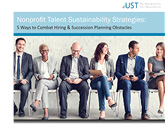Question: Which employers are required to maintain records of illnesses and injuries under the Occupational Safety and Health Administration’s (OSHA’s) recordkeeping and reporting regulations?
Answer: Employers that had more than ten employees at any time during the last calendar year are generally required to prepare and maintain records of serious occupational injuries and illnesses using the OSHA 300 Log. OSHA provides a partial exemption from the recordkeeping requirements for employers who had ten or fewer employees at all times during the previous calendar year and employers in certain low-hazard industries.
To determine if your company is required to prepare and maintain OSHA records, you will need to find your industry’s North American Industry Classification System (NAICS) code number using one of these methods:
Once you have identified your industry’s NAICS code, you can use the Partially Exempt Industries Table to determine if your industry is exempt from the recordkeeping rule.
Important: States with OSHA-approved plans may require employers to keep records for the state, even if employers are within an industry that is exempted from doing so under OSHA regulations.
Unless your facility is municipal, state, or federally-owned, it is subject to OSHA regulations as long as it has employees. Having non-profit status or a small number of employees does not exempt a business from OSHA compliance
Q&A provided by ThinkHR, powering the UST HR Workplace for nonprofit HR teams. Have HR questions? Sign your nonprofit up for a free 30-day trial here.



Having recently joined UST as a Customer Service Representative, Jenny is excited to now be working with nonprofit organizations. As for volunteer work, she’s a sucker for animals and spends as much time as possible supporting the cause during her downtime.
Outside of work, Jenny enjoys spending time with her boyfriend and her fur baby, Diego. They often venture out on hikes at the beach or in the hills and she and her boyfriend fancy exploring new restaurants and breweries when time allows. Jenny’s a huge baseball fan, the San Francisco Giants are her team of choice and she loves the fun rivalry sparred in a city of Dodger fans that just happen to include her boyfriend – that can make for some interesting dinner conversation. She also enjoys cooking and hitting the farmers market. She even worked as a baker/chef in a delicatessen for some time.
She’s a self-proclaimed adrenaline junkie and her enthusiasm for adventure has led her on some pretty impressive journeys. Just to name a few, she’s gone skydiving in Australia from 16,000 feet, repelled down mountains, did a 90-mile cattle drive on horseback mustering 200 head of cattle in Australia for two weeks straight, and rode Horseback through the Loire Valley in France that led to her and her family being in an Absolut Vodka ad – we have a celebrity in house. Not surprisingly, she has an extensive list of places she’d like to visit that include Greece, New Zealand and Italy. She’s already been to Australia three times and actually hopes to one day live there.
Jenny seems like an extremely busy person but she finds her Zen on the beach listening to the waves while reflecting on the things going on in her life. Something we should all get in the habit of doing.
Are you an adventurous soul? Share your stories with Jenny @USTTrust with the hashtag #MeetUSTMondays!

Established in 1989, the Colorado Nonprofit Insurance Agency has been a UST partner since 1983. Having recently joined forces with HUB International, the agency is devoted to serving the 501(c)(3) nonprofit community by providing affordable insurance designed exclusively for nonprofits. Originally established as a benefit to the Colorado Nonprofit Association, the organization has grown in leaps and bounds since its inception.
The Colorado Nonprofit Insurance Agency negotiates and contracts with insurance carriers, evaluates products for quality and cost, researches and develops new products and concentrates on educating their members. A full-service insurance agency, CNIA offers a wide range of products including liability, property, Workers’ Compensation and employee benefits such as health, life and disability coverage. Additionally they provide employee benefit programs ranging from flexible spending accounts to wellness programs.
Serving the Colorado nonprofit community with their insurance needs is all they do! Dedicated to helping 501(c)(3) charitable organizations for over two decades, the Colorado Nonprofit Insurance Agency has many years of experience helping nonprofits determine the best insurance coverage needed to protect their unique needs. For more information on CNIA visit http://coloradononprofitinsurance.org/.

But, Florida was able to make their final loan payment of $9.2 million on Tuesday, May 21st.
Using more than $3.1 billion from employer tax collections and $360 million from an issued Federal Unemployment Tax Act (FUTA) tax credit, Florida became the 14th state to successfully pay off their debt. The remaining states still possess a cumulative outstanding balance of over $21 billion, with an added interest of over $464 million—all of which must be paid off in order to restore their Trust Fund balance.
With their balance finally at $0, and their unemployment rate down to 7.2 percent, Florida is now able to focus their energy on job creation and economic improvement strategies.
While there was no specified payment schedule for the loan, Florida has progressed a lot quicker than some of the larger states. 22 states still remain in debt, but Florida paves the way for economic salvation. And provides a sense of hope to those seeking employment.
Want to learn more about the Florida federal loan pay-off from the Tampa Bay Times? Read this overview.
Compare what your state debt balance is here.

The Unemployment Services Trust has added a new eBook to its library, aimed at helping nonprofit organizations to more effectively find, develop and retain the right kind of talent.
SANTA BARBARA, Calif. (September 28, 2017) – The Unemployment Services Trust (UST) reveals some of the most common courses of action to take in order to help sustain employee talent that’s a best-fit for organizational values, culture and mission. This short eBook provides ideal tactics nonprofits can utilize when approaching reoccurring struggles with recruiting and retaining personnel.
As a nonprofit organization, having the right team is critical to your mission. Without the guidance of strong and steady leadership or the driving force of sufficient organizational support, nonprofits are left vulnerable to financial, strategic and geopolitical uncertainties.
The eBook, “Nonprofit Talent Sustainability Strategies: 5 Ways to Combat Hiring & Succession Planning Obstacles,” reveals that “77% of nonprofit organizations across the country have no leadership transition or a succession plan.” Such lack of preparation can lead to staff burnout, unfinished projects, lost deadlines, and unrealized mission goals.
“The competition for talent is at an all-time high, making it essential that your organization understands how to leverage the benefits you have to offer,” explains Donna Groh, Executive Director. “This eBook provides the insight organizations need to best prepare for inevitable staffing departures while persuading stellar job candidates to come onboard—helping them save valuable time and money.”
Utilizing recent survey data and nonprofit employment trends, UST is able to provide nonprofits with the top five ways to combat hiring and succession planning obstacles.
The eBook, now available for free download, also highlights:
You can download your complimentary copy today at: http://www2.chooseust.org/2017/eBook

Unexpected resignations can present big challenges for any business but especially for nonprofits with an already limited sta ff. Image the shock slowly turning into disappointment, anger and dread. Abrupt departures can be an emotional blow to the psyche, especially if it is someone who has positively contributed to the company. Now what?
Once you’ve processed the emotional aspects of losing a star employee, you’re then faced with the challenge of making sure things run smoothly through the transition. The following steps can help you effectively manage your staff during an unexpected staff departure:
When an employee resigns it creates uncertainty which creates stress. While losing some of your best people is inevitable, it doesn’t have to wreak havoc on the entire infrastructure. Managers set the tone for what happens next and with clear communication and mindful delegation; you can ensure an unexpected departure doesn’t turn your business structure upside down.

For you, answering these questions is critical to creating an invested workforce that sparks the creativity and drive that your mission thrives on. Answering the questions also gives employees a sense of who they are and where they fit in your agency, which leads to more productive, and innovative, workdays.
Answering these questions is only part of a strong employee retention policy though. What other steps do you take to keep employees engaged and excited about your nonprofit?
But falling behind can mean you miss valuable ways to help meet the needs of those you serve.
In fact, our guess would be that everyone at your organization probably agrees that staying up-to-date is important for the continued success of your agency. But how do you manage the flow of information while still being waist-deep in meeting the ever-growing needs of your nonprofit community?
Bridgestar suggests starting a professional reading group. A suggestion UST’s whole Division of Nonprofit Research heartily agrees with.
But, simply starting a professional reading group doesn’t guarantee its success. And, if you’re not sure of the reaction that managers and front line staff will have to a reading group that requires them to read and digest more information than they already are, start with small steps.
If these steps show promise and you’re getting a good response from enough people, suggest to your employees that a reading group should be formed to help your nonprofit stay on top of new developments and innovations.
If scheduling is an issue and causes your employees (or volunteers) to balk, offer several different reading group times that allow employees with different schedules to still meet with each other once a quarter or more often if there is time. Or try pre-recording group input and making it available online. This is the time to be creative in getting people on board and involved because the more your employees invest, the more they’ll be able to tout the strengths of the reading group to employees who haven’t joined yet.
Bridgestar suggests that when you finally start your professional reading group you:

Josh joined UST in the Spring as an Enrollment Specialist with our sales team and was intrigued by the idea of how our efforts could so greatly impact the nonprofit communities we serve through our day to day business. Josh himself, has done his fair share of working with the nonprofit community by mentoring youth, cleaning beaches, helping out at animal rescues and working in food shelters and that’s just to name a few.
Josh is a native to the area and enjoys getting lost in the surrounding hills which happens to be his favorite place to be. He explains, “I like the feeling of not being entirely sure of where I am or where I’m going when on a hike, and then feeling excited to find out.” In addition to working full-time, he’s working on completing his Master of Business Administration, occasionally teaches indoor cycling, enjoys yoga, Pilates and abstract expressionist painting. With a firm belief in personal development, he would also like to earn a PhD in Business Administration or Art history.
Having studied art history and philosophy in college, Josh hopes to one day travel to some of the places he studied, such as the Alhambra in Spain, Dome of the Rock in Jerusalem, Great Mosque of Mecca and Bodh Gaya in India. Not your average travel destinations but certainly amazing places to visit.
In addition to the many activities he enjoys in his spare time, he also enjoys spending time with the love of his life, Zima, his 3-year old Siberian husky. Like so many of his fellow co-workers, Josh always has a good story to share about his beloved pet which makes him a perfect addition to the UST team.
Help us in welcoming Josh to the team via Twitter @USTTrust or Facebook @ChooseUST with the hastag #MeetUSTMondays!

UST maintains a secure site. This means that information we obtain from you in the process of enrolling is protected and cannot be viewed by others. Information about your agency is provided to our various service providers once you enroll in UST for the purpose of providing you with the best possible service. Your information will never be sold or rented to other entities that are not affiliated with UST. Agencies that are actively enrolled in UST are listed for review by other agencies, UST’s sponsors and potential participants, but no information specific to your agency can be reviewed by anyone not affiliated with UST and not otherwise engaged in providing services to you except as required by law or valid legal process.
Your use of this site and the provision of basic information constitute your consent for UST to use the information supplied.
UST may collect generic information about overall website traffic, and use other analytical information and tools to help us improve our website and provide the best possible information and service. As you browse UST’s website, cookies may also be placed on your computer so that we can better understand what information our visitors are most interested in, and to help direct you to other relevant information. These cookies do not collect personal information such as your name, email, postal address or phone number. To opt out of some of these cookies, click here. If you are a Twitter user, and prefer not to have Twitter ad content tailored to you, learn more here.
Further, our website may contain links to other sites. Anytime you connect to another website, their respective privacy policy will apply and UST is not responsible for the privacy practices of others.
This Privacy Policy and the Terms of Use for our site is subject to change.
UST maintains a secure site. This means that information we obtain from you in the process of enrolling is protected and cannot be viewed by others. Information about your agency is provided to our various service providers once you enroll in UST for the purpose of providing you with the best possible service. Your information will never be sold or rented to other entities that are not affiliated with UST. Agencies that are actively enrolled in UST are listed for review by other agencies, UST’s sponsors and potential participants, but no information specific to your agency can be reviewed by anyone not affiliated with UST and not otherwise engaged in providing services to you except as required by law or valid legal process.
Your use of this site and the provision of basic information constitute your consent for UST to use the information supplied.
UST may collect generic information about overall website traffic, and use other analytical information and tools to help us improve our website and provide the best possible information and service. As you browse UST’s website, cookies may also be placed on your computer so that we can better understand what information our visitors are most interested in, and to help direct you to other relevant information. These cookies do not collect personal information such as your name, email, postal address or phone number. To opt out of some of these cookies, click here. If you are a Twitter user, and prefer not to have Twitter ad content tailored to you, learn more here.
Further, our website may contain links to other sites. Anytime you connect to another website, their respective privacy policy will apply and UST is not responsible for the privacy practices of others.
This Privacy Policy and the Terms of Use for our site is subject to change.
On March 14, the DOL announced new tools to help states detect and recover improper unemployment insurance (UI) payments as well as fight UI fraud.
The new online tool is called the Fraud Tips and Leads Gateway and it gives any user the ability to report fraud. Essentially, the DOL is putting power into the hands of the people to help lower fraud and overpayments. It will help states act quickly to investigate tips and leads as well as prosecute fraudulent claims. The DOL is also publishing new, simplified materials that highlight the most common mistakes made by claimants. And for businesses, the materials offer instructions on how to avoid the negative tax implications of wrongful claims.
Said Secretary of Labor Hilda L. Solis. “Too many people don’t know their responsibilities under the program, and too many businesses don’t know what’s at stake for them, especially the tax implications. The tools announced today will help educate consumers and businesses, and ultimately improve the UI system.”
To get these tools into the hands of the public, the department is working with states and through the workforce system to broadly display these materials in public areas and to post them online, says SHRM, the Society for Human Resource Management.
These new resources are expected to help cut down on the billions overpaid, and ultimately help businesses reduce the UI tax rates they pay to the state. The DOL also announced $192 million in grant funds to implement waste-cutting initiatives and improve the UI system. It is expected that these efforts combined will help reduce fraud and overpayments, and potentially save state governments and businesses millions of dollars.
View the DOL map of improper payments by states and find out about the new toolsHERE.
Read the DOL’s fact sheet: “Are You Doing Everything to Protect Your Business from Higher Taxes”.